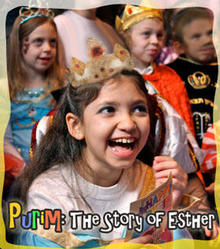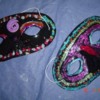Originally posted by Neil MacQueen in response to a question in the Supporting Member's Lesson Help Lounge....
I was thinking of Mordecai's key line: "Perhaps you have been put here for just such a TIME as this". And that led me to thinking of this lesson about time and clocks:
Amazon, among other places, sells a $6 quartz clock kit with hour/minute hands that can be mounted onto a thin piece of plexiglass (or a cardboard box) with a clock dial of the kid's own making/drawing. I would have them make one dial with TWO SETS of numbers for the hands to point at: an inner dial with actual Clock Numbers, and on the outside of that dial an Outer dial with words and symbols that the hands could point to.
The question from the story ringing in my ears could be artistically written on the Outer dial face: "What Time Is It?" "Time to pray", "Time to help", "Time to stand up for what is right."
Think of it as "functional art." And I really like this idea because it goes home!
Now...here's where the "Science" comes in to make this an Artsy~Science Workshop:
How does the quartz clock mechanism work?
The Quartz crystals in the clock kit "vibrate" in perfect time (frequency) when an electrical charge (battery) is applied to them. An amplifier "listens" to the pulse or "ringing" coming from the crystal. Those pulses are regular without wavering, and thus, they can be counted.
Because the scientists know exactly how many oscillations/vibrations per second, the electronics count them and then move the mechanical gears or electronic lights inside the clock exactly on time.
This principle of ONE thing vibrating another --transferring its timing so to speak, could be demonstrated with a tuning fork, which when struck and placed to a glass goblet sets the goblet vibrating, which because of its shape amplifies the sound. POINT: The Holy Spirit sents us vibrating in tune with God.
This is the same principle in audio speakers and old fashioned record players, --transferring a signal into an electrical impulse which can drive a speaker OR drive a gear on a clock. It could also be demonstrated with a tin horn or megaphone.... same thing, it amplifies the sound. You could label that amplifier "Church" or Holy Spirit.
Inside the clock are gears, try to show such. The gears are metaphors for all the things which help move us to stay in time/tune with God. Church, teachers, scripture, prayer. You get the idea.
- WE vibrate when God's Spirit charges us.
- We get "in tune" with God.
- The church amplifies our common energy to make things happen.
I'll let you flesh out the rest, but basically, one thing vibrates/moves another. What vibrates your spirit? or moves you to action? How does God do that? WHO does God do that through? Esther allowed herself to BE IN THE RIGHT PLACE FOR THE RIGHT TIME, to be used as an instrument of God to save her people.
Application:
HOW DO YOU KNOW WHAT TIME IT IS? How do you know when it is the RIGHT time to speak up? When the spirit "moves" you? When the words of scripture or a friend moves you to act. Now you see why the clock needs two dials --to represent the two types of TIME we live in.
PS...some might think it's extravagant to spend $6 per kid on a clock it, but it's a project that has lasting quality. If its beyond your budget, just get a few kits and have the kids make a few clocks that can go on display in classrooms and hallways to serve as a reminder.





